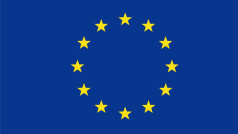Of this, 19.9 million tons were blast furnace slag (BFS) and 15.9 million tons were steelwork slag (SWS). Thanks to an additional 0.6 million tons of stockpile reduction, a total of 20.5 million tons of BFS and 13.3 million tonnes of SWS were used primarily as building materials and fertilizers as well as in metallurgy. As a result, the by-products of the steel industry avoided the extraction of 44 million tons of natural rock across Europe last year and the emission of around 12 million tons of CO2 using granulated blast furnace slag instead of Portland cement clinker in cement. In the period from 2000 to 2023, a total of 1.17 billion tons of natural rock and 416 million tons of the climate-damaging gas were saved.
99 percent of blast furnace slag was used as a building material: 18.3 million tons in cement and 2 million tons as aggregate. 0.2 million tons went into other applications. In the case of steelwork slag, 8.8 million tons were used in road construction, 0.7 million tons in hydraulic engineering, 1.3 million tons in fertilizers, 1.7 million tons for metallurgical work, 0.6 million tons in cement and as a concrete additive and 0.2 million tons for other applications.
The conservation of natural raw materials using ferrous slags between 2000 and 2023 is made up of the substitution of a total of 752 million tons of limestone, clay and sand for clinker production with granulated blast furnace slag in cement, 405 million tons of natural stone with slag-based aggregates in concrete and road construction and 12 million tons of natural lime fertilizer with converter and ladle slag in fertilizers.
Thomas Reiche, Chairman of EUROSLAG and Managing Director of FEhS Building Materials Institute: “Despite the tensions on the European steel market, ferrous slags were once again able to make an important contribution to resource conservation, climate protection and the circular economy in 2023. We are continuing to look ahead and will be taking an in-depth look at current topics at this year’s EUROSLAG conference in Bilbao under the title “Slags for the Future, the Future of the Slags”. This includes the decarbonization of the steel industry and the corresponding ‘new’ slags as well as the resulting necessary adjustments to national and European regulations.”









Would be interested to understand Steel slag recycling processes adopted mainly slag from BOF route to make it useful in Europe.